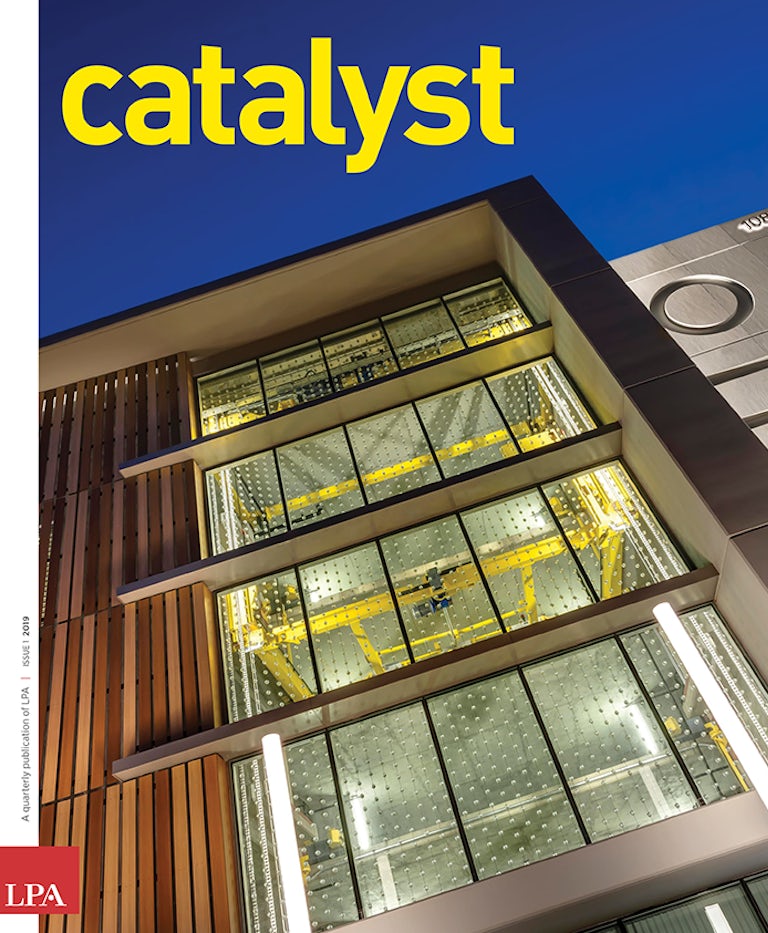Despite all the advances in technology, we still fundamentally construct buildings the same way we have for hundreds of years. This typically involves all the construction and fabrication occurring on site, crafting the building out of raw materials at height and in all types of weather conditions.
There are alternatives, which can cut costs and create safer work sites. Most of my experience has been in New Zealand and the U.K., where contractors and designers are embracing off-site and pre-fab building models. Every community has its standards and challenges, but there is no reason these techniques shouldn’t be part of the discussion in the U.S.
As an architect, I believe designers should be leading the way in these conversations. Working with developers and builders, we can find ways to do more with less, increase quality and make the construction site a safer place.
For many projects, this process should start with analyzing options for more offsite manufacturing, which should be a key part of the toolkit. Pre-assembling elements in controlled conditions with feet on the ground and warm hands simply makes sense. It allows for much higher quality finishing, especially for complicated details that need to be executed well, such as the fitting of thermal insulation, air and water barriers.
At the same time, pre-fabrication provides many cost-saving benefits, at every step of the process. It reduces construction time, enabling more work to be done at the same time, shortening the overall schedule. With skilled labor in short supply in many markets, off-site manufacturing can increase efficiency and reduce the time on site for rented equipment, the general contractor and consultants.
Contractors in the U.K., where the process can be called “design for manufacture assembly” (DfMA) have been able to cut 30 percent of their time spent on some construction sites. I worked on an expansion of Heathrow Airport (with a different firm), where we made a wide variety of small changes that made a big difference in the construction process. A series of prefabricated, cage-like, welded steel trusses were constructed offsite for all the mechanical and electrical runs, which were bolted on to the exterior of the building, like power-packs. One contractor made the roof panels offsite; another built the façade panels. We also changed the design of a roof-façade interface in a manner that saved millions of pounds in DfMA.
Beyond the construction benefits, moving manufacturing off-site creates a much safer work place — a key, often-overlooked advantage. Too much construction is done at height in less-than-ideal conditions, putting skilled laborers at risk. Almost 40 percent of construction-related fatalities in 2016 were directly attributable to working at height, according to the Occupational Safety and Health Administration (OSHA).
The acceptance of pre-fab opportunities is long overdue in the U.S. The car industry has undergone seismic change almost continually since its inception. Technology has changed the manufacturing process across industries. But we haven’t seen the same type of advances in building manufacturing.
I’m not suggesting that contractors should stop what they are doing and build new automated plants to manufacture buildings. But pre-fab and off-site manufacturing should be part of the equation. As designers and contractors, we should be looking for ways to influence the majority of the construction market, beyond the few firms who specialize in this work.
In many cases, it is a small step is for contractors to fabricate a portion of their materials off-site, in controlled conditions. They would be using the same tools and equipment they already have; no new investment required. The change is simply a modification in the thinking and approach to how we build.
It starts by breaking the building down into different components, highlighting the elements that can ideally be fabricated offsite. That can include a wide variety of systems, from the primary structure, façades through to internal wall and ceiling panels. Service modules can be designed to carry all the pipe and trade work through a primary spine. On many projects, these elements can be made by the same skilled people in an offsite condition using the same tools that the contractors already own, in their existing facilities.
At a design level, if you’re approaching a job as a kit of parts, you start analyzing it in a different manner. You start thinking about how the parts go together and you constantly ask, can they be multiplied across a façade system or an interior design? Can you find efficiencies and reduce the number of parts?
Designing with pre-fab in mind also forces you to start collaborating with contractors early in the process. There’s more pre-thinking and dialogue needed to look for systems that can be easily duplicated or manufactured in the factory. Even if it’s a traditional design-bid-build project, you still want to work with different contractors throughout the design phases to critique the job and look for ways to pre-assemble chunks of it.
It becomes a real collaboration. Instead of thinking in silos, you realize there’s not one person who’s got all the ideas. It’s being open enough to stake your vision out there, search for new manufacturing ideas and encourage people to work together. You develop a team that thinks the same way, focused on better outcomes.
Julian Watt is a Practice Director at LPA’s Sacramento, California office.
This story originally appeared in Catalyst Issue 1 2019. Subscribe today to receive Catalyst, a quarterly publication that takes a deep dive into design ideas, industry leaders and initiatives.
















